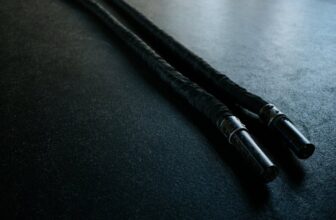
When it comes to sports, wrist protection is crucial for preventing injuries. You'll need to consider various types of wrist guards designed for different activities. Choosing the right gear can make a significant difference in your performance and safety. With so many options available, how do you know which ones are best for you? Let's explore the key factors that can help you make an informed decision.
Importance of Wrist Protection in Sports
When you engage in sports, you mightn't realize how crucial wrist protection can be until an injury occurs. Your wrists are vulnerable, especially in activities that involve falls or heavy impacts.
A sprain, fracture, or strain can sideline you for weeks or even months. By prioritizing wrist protection, you not only enhance your performance but also minimize the risk of long-term damage.
Wearing proper gear can provide the support and stability your wrists need during intense activities. It's essential to recognize that injuries can happen to anyone, regardless of skill level.
Types of Wrist Guards Available
Understanding the different types of wrist guards available can significantly enhance your protection during sports.
There are mainly two categories: flexible and rigid guards. Flexible wrist guards offer a balance of support and mobility, allowing for natural movement while still protecting against minor injuries. These are great for activities like skateboarding or rollerblading.
On the other hand, rigid wrist guards provide maximum support, ideal for high-impact sports such as snowboarding or BMX biking. They often have hard shells to absorb shocks and prevent hyperextension.
Additionally, some guards come with adjustable straps for a customized fit, ensuring they stay secure during your activity. Knowing these options helps you make informed decisions about your wrist protection gear.
How to Choose the Right Wrist Protection Gear
How can you ensure you're choosing the right wrist protection gear for your needs? First, assess your activity level and the specific risks involved. If you're skating or playing a contact sport, opt for guards with reinforced padding and durable materials.
Next, consider the fit; your gear should be snug but not restrictive. Look for adjustable straps to customize the fit for optimal comfort and support.
Check the weight of the gear too; lighter options allow for better mobility while still providing protection. Lastly, read reviews from other users to gauge effectiveness and comfort.
Tips for Properly Using and Maintaining Your Wrist Gear
Choosing the right wrist protection gear is just the beginning; using and maintaining it properly is equally important for maximizing its effectiveness.
First, always ensure your gear fits snugly but comfortably. Loose gear can shift during activity, reducing protection.
Regularly inspect your wrist gear for wear and tear, replacing any damaged components immediately.
Clean your gear according to the manufacturer's instructions to prevent buildup of sweat and grime, which can deteriorate materials over time.
Store your gear in a cool, dry place to avoid moisture damage.
Finally, take time to adjust your gear before each use, ensuring it remains in optimal condition.
Conclusion
In conclusion, investing in the right wrist protection gear is crucial for keeping your wrists safe during sports. Whether you opt for flexible guards for mobility or sturdy ones for high-impact activities, prioritize comfort and durability. By choosing the right gear and maintaining it well, you can enhance your performance and significantly reduce the risk of injuries. Don't underestimate the importance of wrist protection—your wrists will thank you for it!




